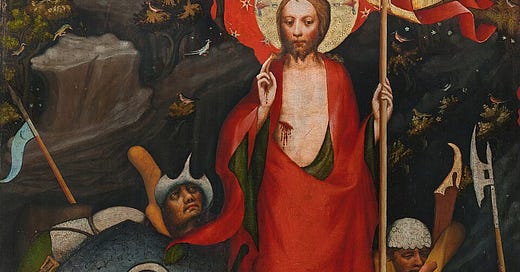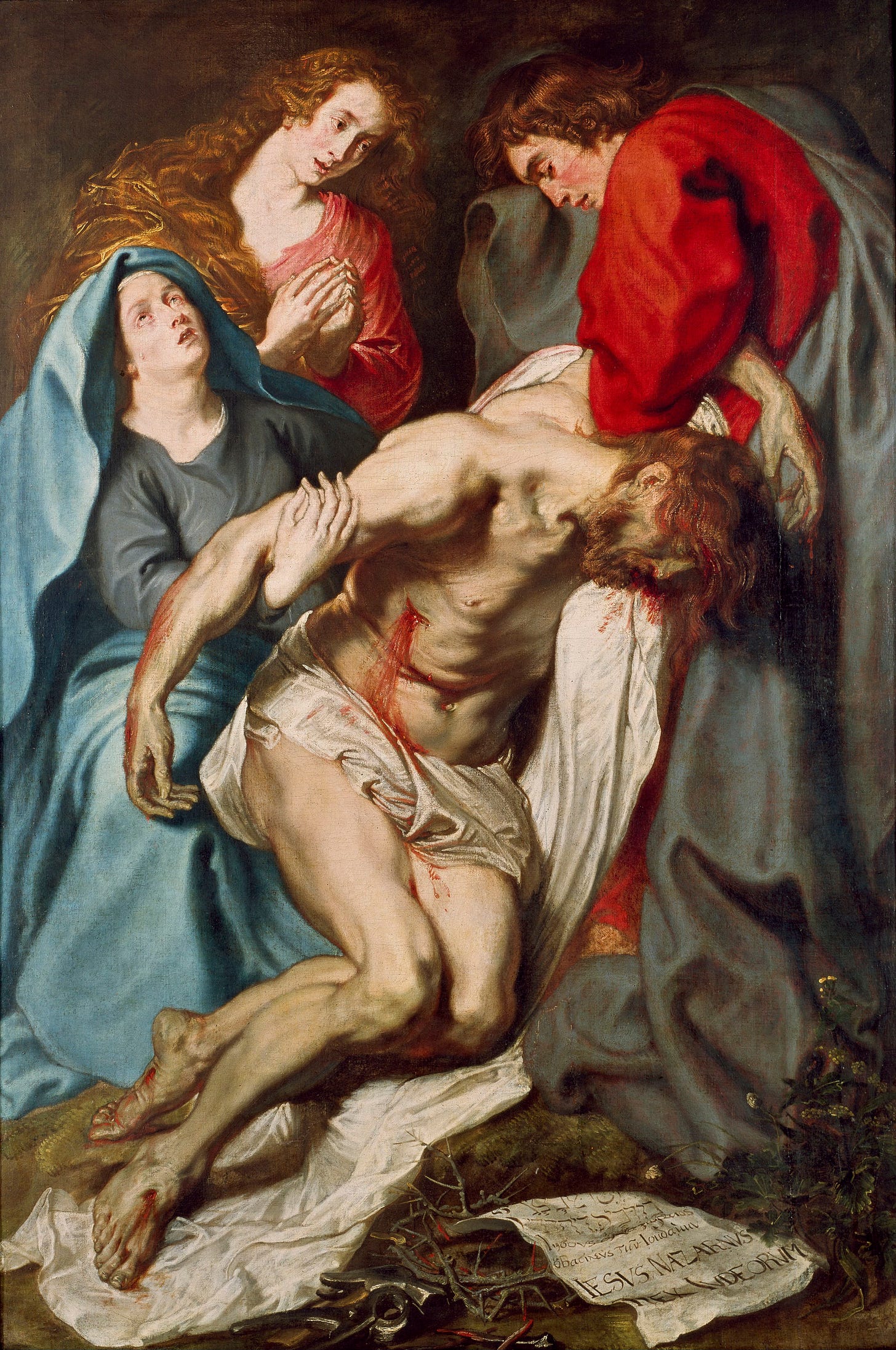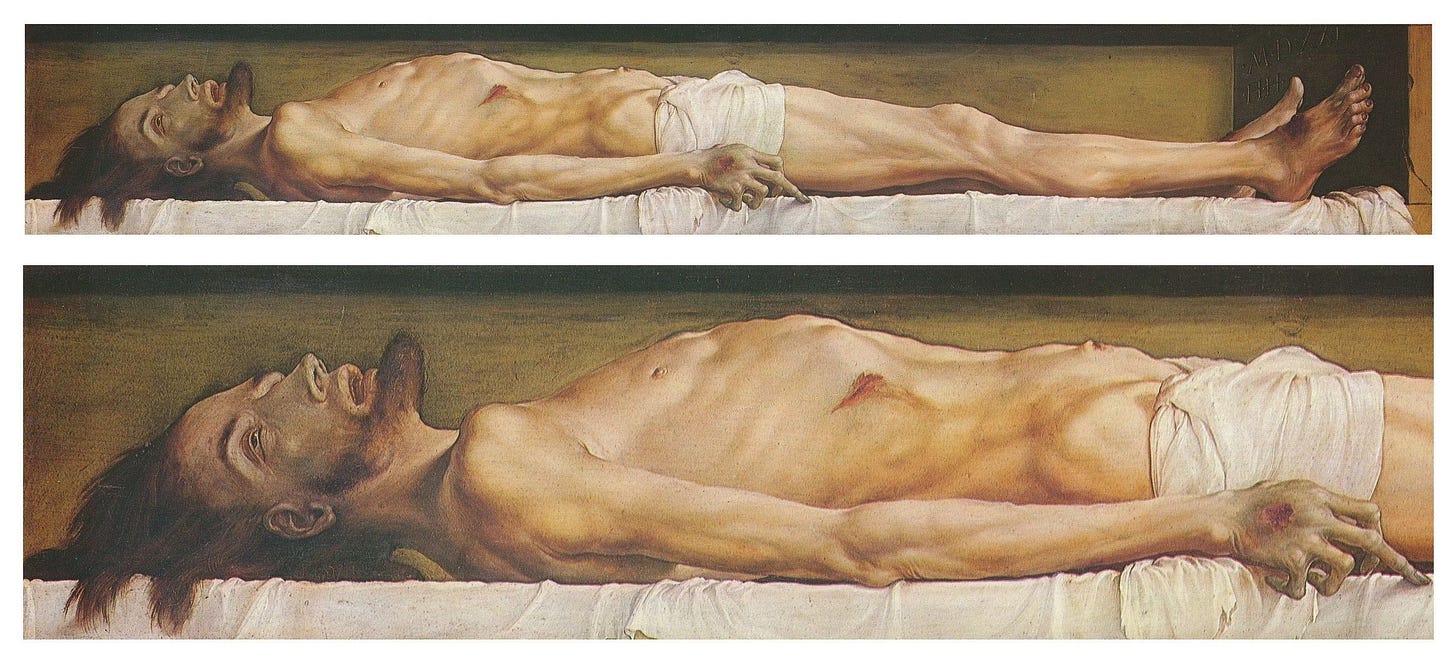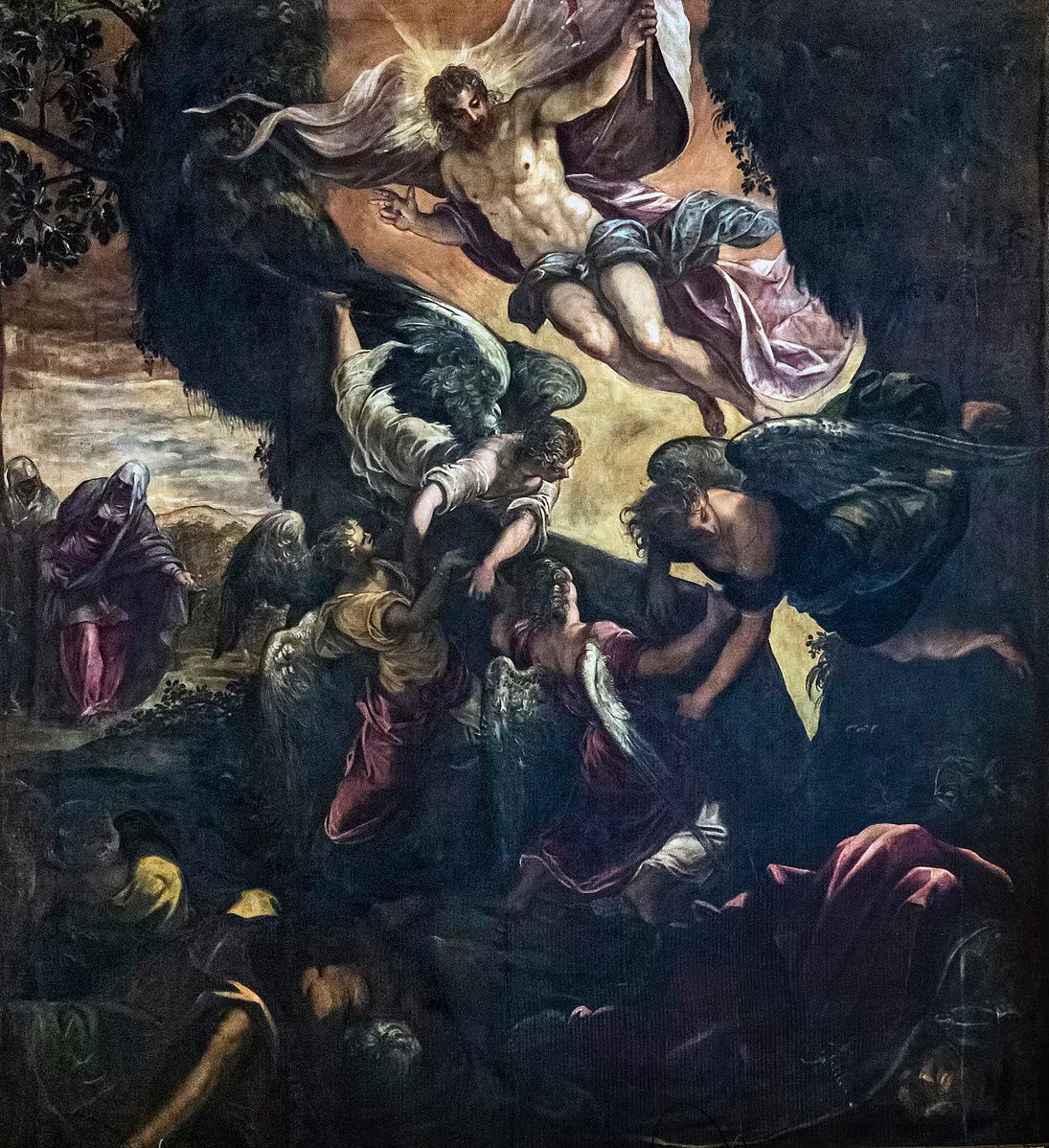Dad,
He is risen! And this year, the Eastern Orthodox calendar lines up with ours, so I guess that means he’s also risen…in Greek!
I’m so glad we all got to spend this Easter x 2, Resurrection Boogaloo together. The older I get the more I think there really is nothing like this holiday, nothing like this story on earth—from the unbearable confrontation with the crucifixion dark to the baffled delight of resurrection morning. The resurrection means, to paraphrase Sam Gamgee, that one day everything sad will come untrue. But how could it? But it will. It will. But how could it?
A few years back I noticed something about Christian painting and sculpture, two of the richest artistic traditions in the world. The museums are full of masterworks depicting the crucifixion and death of Christ. There’s one by van Dyck in Oxford’s art museum that I can still hardly look at without being tempted to despair—the Body of Christ in it is so heavy, so earthbound, so dead.
Then there’s the Holbein painting of Christ in his tomb that so transfixed Dostoevsky his wife had to tear him away from it before he broke into a seizure. And of course, Michelangelo’s Pieta, which hits you like a gut punch every time you find it in the Vatican.

But there are—despite the unimpeachable talents of the many artists who have tried—no truly great depictions of the resurrection. The many Christs that rise wreathed in light to the open air or crack open the stone slabs of their tombs on church walls are often majestically rendered. But they don’t surge with the throb of the event itself as described in the Gospels. And I think this is by necessity, and I think it’s important.
Death is all too well within our experience. We know the tug of its gravity every day. We are acquainted with the nature that grinds down bit by bit to a halt, with loss and with decay.
But we have never seen—the physicists tell us we can never see—the tape played in reverse. The most realistic thing about the resurrection stories in the Bible to me is their surreality, the way the risen body of Christ flickers and wavers along the borderline between our world and another.
He makes a point of showing people that he’s solid flesh and blood, that he’s not a ghost, that he can eat fish. But he also appears out of nowhere, disguises himself in plain sight of his best friends, then suddenly drops the disguise at the breaking of bread or the mention of a name.
Our theme this month is what it means to be human, and the resurrection is a final answer to that—it means something as familiar as the muscle tissue of our own hearts but better than we can even yet comprehend. It means that our humble skin and bones are even now straining to embody a kind of life more glorious than our death-bound tongues can name.
Love,
Spencer









Your dad’s favorite colleague on Daily Wire, Michael Knowles, did an interview with a scholar of the Shroud of Turin. The most recent studies show that the image was laid out when some gajillion amounts of energy surged through the body/shroud. I keep thinking of that. I always thought of Jesus kind of waking up and waiting to greet Mary Magdalene. But imagine God coming in an unfathomable explosion of energy and love to resurrect his son. Then what does Jesus do? He harrows hell itself, literally pulling the dead out of their bondage. It’s not the tame little story that I held in my imagination for so long. It is incomprehensibly powerful, dynamic, and filled with love. It is like the Big Bang on a human level. I don’t know how any artist could convey that.
I don't want the resurrection to be reduced to a trick of biology and physics. That is what gave us the crucifixion. One of the cruel gifts of modernity is that they have taken from us the miracle of the Resurrection while leaving us the bloody and broken and very dead body of Christ.